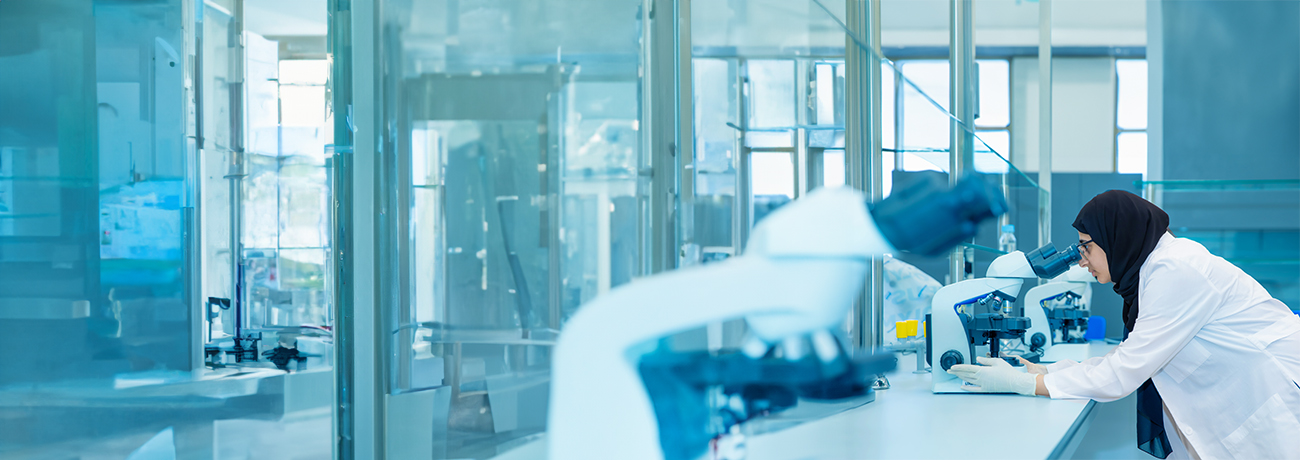Anatomy Department
Overview
Welcome to the Anatomy Department, where we are dedicated to fostering a deep understanding of the human body's structure and function. As one of the foundational disciplines in medical education, anatomy forms the cornerstone upon which students build their knowledge of clinical practice and research. Our department is committed to providing comprehensive and innovative educational experiences, conducting cutting-edge research, and contributing to advancements in healthcare.
Our mission is to educate medical students, healthcare professionals, and researchers about the intricacies of human anatomy, histology and embryology, preparing them for successful careers in medicine, academia, and beyond. We aim to cultivate a culture of inquiry, critical thinking, and lifelong learning within the broad field of human anatomy.
Facilities
The Anatomy Department oversees the operation of the Anatomy Dissecting Laboratory, a pivotal educational facility essential for the instruction of medical students in Gross Anatomy. The Dissecting Room accommodates both undergraduate and postgraduate medical students and is accessible to them outside regular class hours.
Anatomy Research Laboratories are equipped with Tissue Culture Unit, various apparatus for tissue sectioning including cryostats, vibratomes, and microtomes, and Tissue Embedding Unit, Brain organotypic culture system, Gene-gun biolistic transfection system and next generation sequencing, among others.
The Microscopy and Imaging Facility provides excellent electron and confocal laser microscopy services to a wide variety of individuals and departments across CMHS and UAEU. The facility is equipped with Transmission Electron Microscopes, Environmental Scanning Electron Microscope, Confocal Laser Microscopes, and Fluorescence Microscopes.
These resources enable faculty and students to engage in cutting-edge research across a spectrum of anatomical disciplines, fostering innovation and discovery within the field of anatomy.
Teaching
The Anatomy Department delivers comprehensive instruction in morphological sciences throughout the initial four years of the Doctor of Medicine (MD) curriculum.
Year 1 include topics such as General Human Biology, Cytology and Histology, along with Thorax, Vertebral column, Abdomen and Pelvis, Perineum topography, are covered.
Year 2 encompasses the study of Upper and Lower Limbs, and Head and Neck anatomy and human embryology.
Year 3 and Year 4 the Department plays a pivotal role in elucidating various subjects including Mechanism of Malignancies and Oncology, Cardiovascular and Respiratory Systems, Water and Mineral Balance, Excretion, Nutrition and Metabolism, Growth and Reproductive Systems, Musculoskeletal System, Neuroscience, and Special Senses. During this phase, the Department instructs on histology, embryology, and revisits gross anatomy of organ systems.
Furthermore, the Anatomy Department actively engages in Problem-Based Learning and clinical teaching, offering expertise through multidisciplinary seminars.
Graduate Teaching Beyond undergraduate medical programs, the Department extends its offerings to Masters and PhD students through courses such as Principles of Research, Developmental Anatomy, Medical Tissue and Cell Biology, Advanced Research techniques, Advanced Cell Biology, and Techniques in Morphological Sciences.
Research
The Anatomy Department explores a diverse array of research topics across various anatomical disciplines, contributing to advancements in medical science and healthcare. Some of the prominent research topics pursued by the department include:
- Neuroscience: Investigating the structure and function of the nervous system, including studies on neuroanatomy, neural development, synaptic plasticity, and neurological disorders.
- Stem Cells: Exploring the biology of stem cells, including their proliferation, differentiation-associated migration, and their role in organoid formation, carcinogenesis and therapeutic applications in tissue engineering and targeting cancer stem cells.
- Cancer Biology: Examining the molecular mechanisms underlying cancer development, progression, and metastasis, as well as identifying novel therapeutic targets and strategies for cancer treatment using human tissues, animal models, 2D cancer cell culture and 3D cancer cell spheroids.
- Diabetes Mellitus: Studying the pathophysiology of diabetes mellitus, including the impact of insulin resistance, beta-cell dysfunction, and metabolic abnormalities on glucose homeostasis and complications of diabetes, transmission electron microscopic study of pancreatic tissue grafts, and the effect of bioactive agents on pancreatic hormone release
- Epigenetics: Exploring epigenetic mechanisms, DNA methylation and histone modifications in gene expression and cellular differentiation, with implications for development, disease, and personalized medicine.
- Regulatory RNAs: Elucidating the role of regulatory RNAs such as long non coding RNAs and miRNAs in development and disease with special emphasis on metabolic diseases.
- Structure/Function Relations: Examining the relationship between anatomical structure and physiological function in various organ systems, including the musculoskeletal, cardiovascular, endocrine, and respiratory systems.
- Developmental Biology: Investigating the light and electron (TEM and SEM) microscopic tructure of various tissues and organs with a spcial focus on the processes of pre- (embryonic) and post-natal development as well as the aging process.
- Molecular and Cellular Biology: Studying mRNA and protein expressions using advanced molecular biology methods such as qRT-PCR, in situ hybridization, western blotting, lectin histochemistry, immunocytochemistry, immunoelectron microscopy, and confocal microscopy.
- Cell and Tissue Dynamics: Defining the location and features of proliferative (stem?) cells in some neglected organs and glands and following their differentiation pathways in health and disease using pulse-chase experiments.
- Tissue Engineering and Regenerative Medicine: Utilizing stem cells, biomaterials, and their mechanical properties to develop biomimetic scaffolds and organoids for potential future transplantation and regenerative medicine applications, with a special focus on understanding tissue development and regeneration.
These research topics reflect the department's commitment to advancing knowledge in anatomy and its relevance to human health and disease, as well as its interdisciplinary approach to addressing complex biomedical challenges.
To access the research profiles of individual faculty members, kindly use the following link:
Department of Anatomy – Researchers — United Arab Emirates University (uaeu.ac.ae)
Faculty
Note: If calling from outside the UAEU organization, dial (+971 3 713) before the extension.
| Name | Position | Extension | |
|---|---|---|---|
| Prof. Ernest A. Adeghate | Professor and Chair | eadeghate@uaeu.ac.ae | 7496 |
| Prof. Mohd Allouh | Professor | m_allouh@uaeu.ac.ae | 7551 |
| Prof. Safa A. Shehab | Professor | s.shehab@uaeu.ac.ae | 7492 |
| Prof. Sherif M. Karam | Professor | skaram@uaeu.ac.ae | 7493 |
| Prof. Starling E. David | Professor | bsemerald@uaeu.ac.ae | 7497 |
| Dr. Sahar Mohsin | Associate Professor | smohsin@uaeu.ac.ae | 7516 |
| Dr. Mohammad Hamad | Assistant Professor | m.hamad@uaeu.ac.ae | 7494 |
| Dr. Soumya Vinod | Instructor | soumya.vinod@uaeu.ac.ae | 7586 |
| Dr. Prasanna Gaydhanker | Instructor | p_gayd@uaeu.ac.ae | 7605 |
Staff
Note: If calling from outside the UAEU organization, dial (+971 3 713) before the
extension.
| Name | Position | Extension | |
|---|---|---|---|
| Ms. Crystal M. D'Souza | Medical Research Specialist | crystal.dz@uaeu.ac.ae | 7552 |
| Ms Maitha Alnuaimi | Medical Research Specialist | maitha.nuaimimsn@uaeu.ac.ae | |
| Ms. Marwa F. Ibrahim | Medical Research Specialist I | marwa.i@uaeu.ac.ae | 7616 |
| Dr. Suneesh Kaimala | Medical Research Specialist I | suneesh@uaeu.ac.ae | 7614 |
General Enquiries
Thank you for your interest in the Anatomy Department. We welcome your query and encourage you to contact us using the information below:
United Arab Emirates University,
College of Medicine and Health Sciences
P.O.Box: 15551, Al Ain, UAE
Phone: + 971 3 7137 508
عفوا
لايوجد محتوى عربي لهذه الصفحة
عفوا
يوجد مشكلة في الصفحة التي تحاول الوصول إليها


